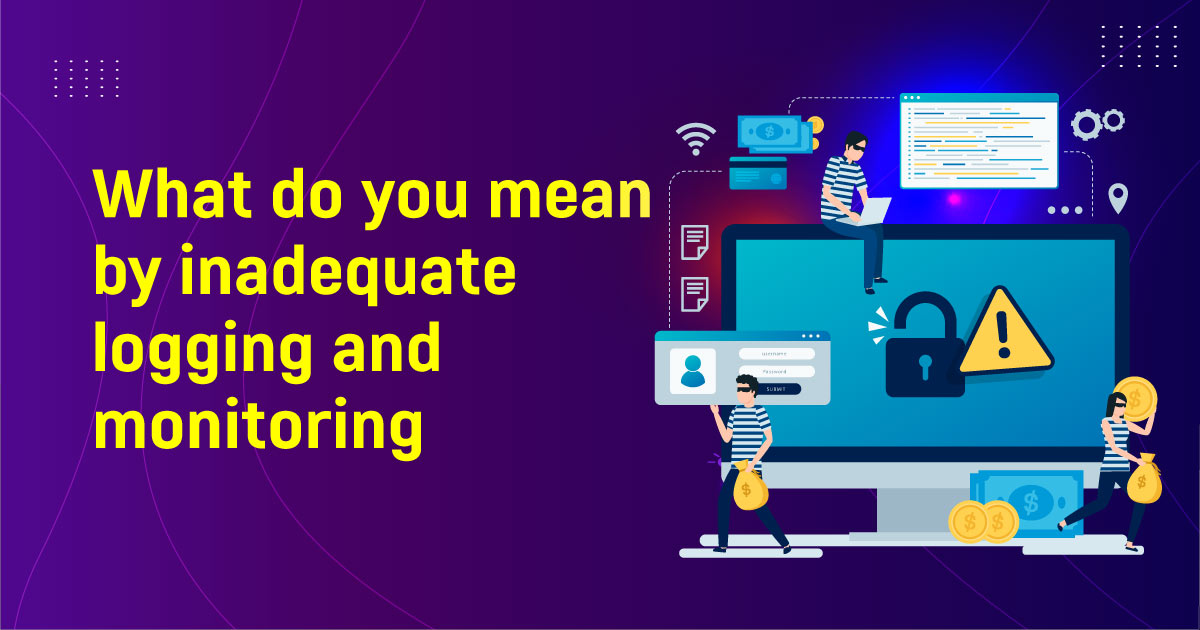What is Logging and Monitoring?
In the world of cybersecurity, logging and monitoring play a critical role in protecting organizations from cyber-attacks. By keeping track of activity across networks, systems, and applications, organizations can detect and respond to threats before they cause damage.
In this article, we’ll explore logging and monitoring, why logging and monitoring are important in cybersecurity, what insufficient logging and monitoring is, why it’s a problem, and what organizations can do to address it.
Logging:
Logging involves recording events or actions that occur within an organization’s network, systems, and applications. Logs can be generated from various sources, including firewalls, intrusion detection systems, servers, and databases. The information contained in logs can help security teams identify and investigate potential security incidents.
Logs typically include information such as the source and destination IP addresses, timestamps, user IDs, and actions taken. For example, a log entry might show that a user attempted to access a restricted file on a server and was denied access.
Monitoring:
Monitoring involves actively observing activity within an organization’s network, systems, and applications to detect security incidents. This can be done manually or with the help of automated tools such as security information and event management (SIEM) systems.
Monitoring can include real-time analysis of network traffic, system logs, and user activity. This allows security teams to identify potential threats as they occur and respond quickly to minimize damage.
Why are Logging and Monitoring important in cybersecurity?

Logging and monitoring are essential components of any cybersecurity strategy. Here are some of the reasons why:
Early detection of threats:
By monitoring network traffic and system logs, security teams can detect potential threats early and take action before they cause significant damage.
Compliance:
Many regulatory frameworks require organizations to maintain logs and monitor their systems to comply with security standards.
Incident response:
Logs can provide valuable information during incident response, allowing security teams to identify the source of an attack and take action to prevent it from happening again.
Auditing:
Logs can be used to audit user activity, helping organizations to identify potential security risks and ensure compliance with security policies.
Insufficient Logging and Monitoring:
Insufficient logging and monitoring refer to a cybersecurity vulnerability in which an application or system does not generate sufficient log data or fails to monitor its logs effectively which leads to potential security threats, such as unauthorized access or unusual network activity. security teams may not be able to detect security breaches until it is too late.
To address this vulnerability, organizations can implement a logging and monitoring strategy that includes:
-
automated log collection and analysis
-
security event monitoring
-
regular security audits
-
clear policies
-
implementing monitoring solutions
-
testing systems and continuously improving
These strategies can help identify security incidents and allow security teams to respond quickly and effectively to minimize the impact of any potential breaches.
A Web Application Firewall (WAF) can help address insufficient logging and monitoring in several ways.
Firstly, a WAF can log all incoming web traffic and alert any suspicious behavior, such as SQL injection attacks or cross-site scripting (XSS) attempts.
Secondly, a WAF can block malicious traffic and alert administrators to any attempts to exploit vulnerabilities in the web application.
Thirdly, a WAF can help organizations meet compliance requirements by providing additional logging and monitoring capabilities that may be required by regulatory frameworks.
Conclusion
Insufficient Logging & Monitoring is not a direct vulnerability or threat, but rather the organisation is blind to current active attacks, previous attacks, and the information needed in the forensics process to determine the impact of the attack. It is almost impossible to track suspicious activities and respond to them in a timely fashion.
It is crucial to maintain compliance and awareness by implementing proper measures and establishing adequate logging and monitoring systems.












